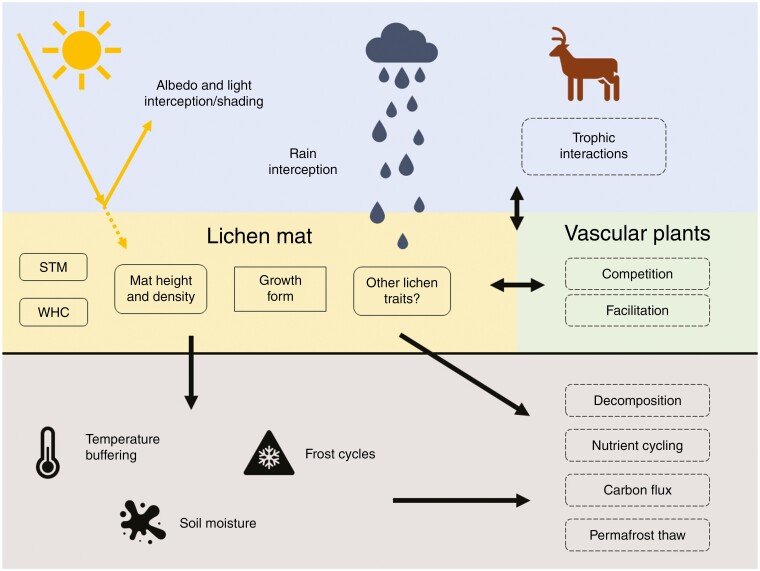Fig. 2.
A schematic representation of the ecological interactions involving ground-dwelling mat-forming lichens. Lichen mats reflect more light (albedo) than vascular plants and shade the ground. They also intercept and absorb rainfall. Several lichen traits are key drivers of these processes: specific thallus mass (STM), water-holding capacity (WHC), mat height and density, lichen growth form, and potentially, other unexplored lichen traits. Here, rounded boxes depict continuous traits, while square boxes indicate categorical traits. These traits determine how mat-forming lichens affect soil microclimate, i.e. they buffer temperature, reduce the number of frost cycles and modulate soil moisture. Lichen traits can both directly and indirectly (through soil microclimate) affect ecological processes (dashed boxes), although we know relatively little about the exact mechanisms behind these effects. Furthermore, lichens engage in biotic interactions with vascular plants (competition, facilitation), and higher trophic levels (e.g. reindeer grazing).

